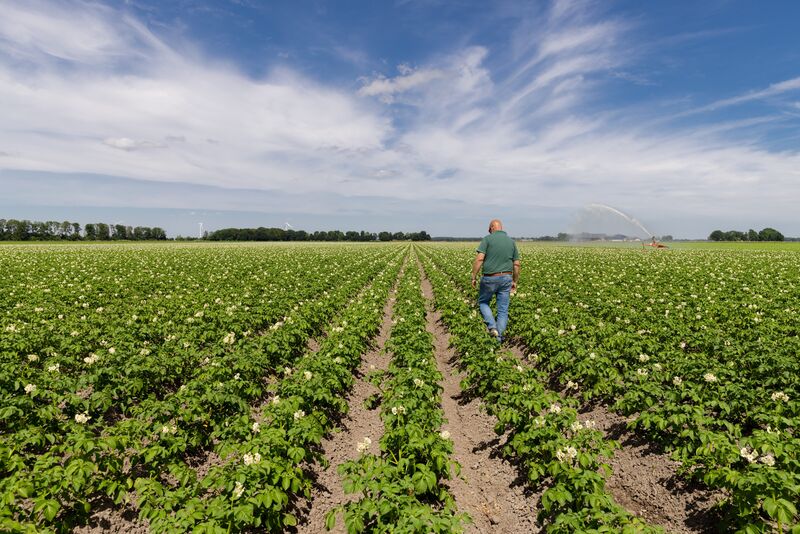
This summer, growers all over Europe are trialling biological crop protection methods in their fields. As the crops develop, the Koppert team conducts follow-up visits. They scout the fields, count plants and assess their health. Across the board, the results show that introducing biological solutions early on, from biological fungicides to beneficial nematodes, gives plants a better start, resulting in higher yields and a better-quality crop.
In the middle of June, Market Development Manager at Koppert Felipe Mendonça joined his colleagues in the field to follow up on trials in Italy, Spain, France, Poland and the Netherlands. Just halfway through the growing season, the impacts of Trianum and beneficial nematodes on crop development were already easy to observe.
Healthy soil and strong roots with Trianum
When Felipe and his team monitor the effect of Trianum, a biological fungicide used to combat soil diseases such as Pythium and Rhizoctonia, they pay attention to the roots. “Early in the season, we can already observe the positive impact of Trianum on the health of the crop. Adding Trianum at the time of sowing controls soil-borne diseases, protects the root systems and thereby enables the crop to develop better. We can observe this visually. Potatoes treated with Trianum show fewer spots associated with Rhizoctonia. And in corn, Trianum's protective qualities result in more plants and higher yields.”
Fewer losses and improved quality with beneficial nematodes
The trials with beneficial nematodes, natural enemies of a wide variety of pests such as wireworms, caterpillars and fly larvae, are also showing promising results. Felipe: “We see that our Casea and Capirel beneficial nematode solutions support the healthy development of onions by protecting plants against pests during the earliest stages of development, when they are most vulnerable. In potatoes, they successfully control pests throughout the development cycle to prevent damage to the tubers. We are counting more plants and fewer losses, which translates to higher yields. Even halfway through the season, the grower already gains insight into the expected return on investment of our solutions.”
“What has been quite exciting to see, is the impact of the Casea beneficial nematodes on the quality of the crop, particularly in potatoes. During our last visit, the roots were just firming up and tubers were still forming. When wireworms feed off these developing tubers, they create holes, and the potato can no longer be sold. We observed that by increasing the population of beneficial nematodes in the soil, we were able to kill more wireworms. In other words, our living solutions are serving as a counterbalance to the living organisms that are damaging crops. So we are not just helping to improve yields, but also the quality of the product. That is another way we are adding value for the grower and the distributor.”
Testing new application methods
The growing season also provides the opportunity to test new application methods. “We have validated the use of a furrow sprayer to apply our micro products in row crops like soy, beans, corn, wheat and rapeseed. The sprayer will enable growers to apply our biological fungicides and pesticides and beneficial nematodes efficiently and effectively in fields of any size to control pests and improve crop health. In addition, it will help growers optimise the use of products like Trianum and biostimulants in their outdoor vegetables. By developing new and innovative application methods like the furrow sprayer, we aim to add even more value for the grower.”
Powerful secondary effects
The follow-up visits will continue throughout the growing season. “We will continue to observe the impact of our solutions on the crop, all the way to harvest. More resilient root systems, the improved uptake of nutrients and water and improved development of the crop overall are powerful secondary effects of our products that truly come to life as the season progresses. We also confirm the return on investment for the grower once we know the final yield. When we can prove that we added value, we consider the trial a success.”